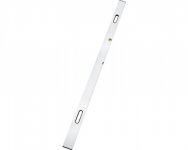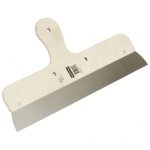demographic
Member
- Joined
- May 9, 2015
- Messages
- 795
DeformedTree said:Bit of a tangent, but is Plaster the Norm in Europe, or has it largely been replaced by Drywall like in the US? Or is there a 3rd or 4th option that is the norm (400 years of patch...aka charm)?
I can't really comment for areas other than the north of England but for what its worth...
Here we usually use a plaster skim finish over plasterboard on household and smaller areas. As far as I'm concerned its a far better finish than taped and jointed walls.
Larger areas on commercial buildings tend to get plasterboard then taped and jointed, otherwise the plasterer has to go nuts to get a load of plaster on in one go.
Then in places subject to flooding risk (I live in Carlisle which has had considerable flooding over the last 20 years) it's quite common to just plaster over the brickwork in the downstairs of properties so if it floods it takes far less time to sort out.
Bear in mind that I'm not a plasterer so have gaps in my knowledge of the subject.
I sometimes screw plasterboard on walls I've made but generally avoid it if I can.


